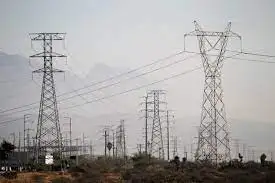The politics of climate
The conference failed to agree on a legally binding treaty to reduce greenhouse gas emissions and fudged the issue of a climate fund for vulnerable developing countries — the two things it had come together to accomplish.
To call the accord — that was hammered out at the very end by the United States, China, India and South Africa but not yet agreed to by everyone — weak and watered down would be an act of supreme charity. It is in fact shameful proof of the collective and monumental failure of global leaders. Barring a miracle of scientific breakthrough and the root-and-stem transformation of politics, a rise in temperature of more than two degrees Celsius seems certain. Which translated means that humanity now faces an increased risk from dystopian consequences of climate change: droughts, pestilence, extreme water shortages, mass migrations, destructive weather events, social strife and collapsing states.
The impasse boiled down to industrialized countries — those chiefly responsible for the problem — refusing to own up to their historical and moral responsibility of curtailing atmospheric pollution, and adequately compensating those who will suffer the consequences of that which they had no role in creating.
The rich countries — since the 1992 Earth Summit in Rio — have put political expediency and vested interests ahead of the need to protect the Earth’s biosphere. America, the world’s second highest (overall) and largest per capita emitter of greenhouse gases leads the pack. As the world’s largest economy, and the one most capable of taking a leadership role in the shift towards a low-carbon economy, it offered emissions reduction targets of a dismal four per cent below 1990 levels. Scientists say that to avoid catastrophic global warming, the world needs to reduce its emissions by 25 to 40 per cent (below 1990 levels) in the next decade and follow through the downward trend thereafter till 2050.
Close on the heels of the U.S. is cuddly old Canada. Its emissions have grown by over 35 per cent over 1990 levels since Kyoto. Throwing all caution to the wind, Canada is racing ahead to ratchet up its emissions by exploiting Alberta’s giant tar sands for oil — which makes coal look positively clean. No doubt, Canada’s opposition to deep cuts is informed by scientific predictions that it will be a net gainer of global warming, mainly as a result of increased agricultural production.
The host of the Copenhagen Conference, Denmark, which did its utmost to scuttle an agreement on legally binding emissions cuts by trying to kill Kyoto, and drown out voices of civil society while providing space for corporate lobbyists to exert their influence over national negotiators in backroom deals, is a new entrant to the league. Australia, which generates over 75 per cent of its electricity using its abundant coal reserves, has been a longstanding opponent of significant and mandatory emission cuts, and a perennial stick-in-the mud.
Saudi Arabia, with an economy based entirely on oil production (and dates), has done its fair share of scuttling a global deal. One might have thought that after five decades of accumulating wealth, the Saudis might have been willing to forego a little of it to avoid the likelihood of a grim future for the planet, but no such luck.
Japan and the EU have pledged considerable emission reduction targets and funding for adaptation and green technologies in developing countries, but have made their offers contingent on actions by the U.S. and China.
China and India, largest and fifth largest emitters in the world, argue that industrialized countries failed to live up to their Kyoto pledges, and are now trying to rope poorer nations into a legally binding new agreement which would threaten their economic growth potential. Both want rich countries to first make deep cuts and pay due reparations in order to demonstrate their resolve for a just solution before asking others to do more. However, as the worldÂ’s largest emitter, China bears the responsibility to make deeper emissions cuts and agree to independent oversight of its national program, which it has resisted. China bears part of the blame for its role in watering down the Copenhagen Accord.
The negotiating position of developing countries has centred on demanding financial and technical help for climate change adaptation and clean energy deployment. The draft Copenhagen Accord makes unspecified promises of $30 billion, but donÂ’t hold your breath. A lot of money and technology transfer were promised under the Kyoto Protocol, and a piddling came through.
Weighed down by a bloody insurgency, institutional overreach by different organs of the state and a broken administrative machinery, Pakistan is amongst those likely to be hit the hardest. Climate change threatens to multiply the torrent of our current woes into tsunamis of the future. Ok, so we didnÂ’t create the problem and we have much too much to take care of now, but does that stop us from at least doing what we can?
Future water shortage is a very serious issue facing Pakistan. Are institutions responsible for water resources development and management doing anything about it? Do they have a climate change strategy? Is it being implemented? What we seem to suffer from is a poverty of imagination not so much the paucity of money or technology.
We are in for a surprise if we think free money will come flooding in to do with as we please, no questions asked. Financial support, when and if it comes, will be contingent upon concrete plans and actions on the ground. There are no indications we have moved beyond platitudes in the debate on climate change. While itÂ’s fine to peddle oneÂ’s victimhood to extract reparations, that alone is not going to save coming generations from the ravages of climate change.
Related News

Affordable, safe' nuclear power is key to reaching Canada's climate goals: federal minister
TORONTO - Canada must expand its nuclear power capacity if it is to reach its climate targets, according to Canadian Minister of Natural Resources Seamus Oregan.
Speaking to the Canadian Nuclear Association’s annual conference, Seamus O’Regan said the industry has to grow.
“As the world tackles a changing climate, nuclear power is poised to provide the next wave of clean, affordable, safe and reliable power,” he told a packed room.
The Ottawa conference was the largest the industry has run with dozens of companies and more than 900 people in attendance. Provincial cabinet ministers from Saskatchewan and Ontario were also there. Those two…





